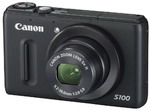Tuesday, May 25, 2004
RAW Files Unleashed
Posted by Suhit Gupta in "ARTICLE" @ 07:00 AM
Of course what happens after you've taken the photograph depends on whether you have the camera set to save images to the memory card as raw files or JPGs. If you've saved the file in raw mode when it is subsequently loaded into a raw conversion program and then saved to a TIFF or .PSD format file it can be exported in 16 bit mode. The 12 or 14 bits recorded by the camera are then spread over the full 16 bit workspace. If you've saved the file in-camera as a JPG than it is converted by the camera's software to 8 bit mode and you will only ever have 256 brightness levels to work with."
A really good article, as it explains very clearly what RAW images are and what format they are actually stored in. The author covers the pros and cons of taking pictures in RAW format and then compares RAW images to JPG images (cameras typically store images in either RAW or JPG format). One of my favorite points in this article is "A raw file is comparable to the latent image contained in an exposed but undeveloped piece of film. It holds exactly what the imaging chip recorded. Nothing more. Nothing less. This means that the photographer is able to extract the maximum possible image quality, whether now or in the future. A good analogy with the traditional world of film is that you have the opportunity to use a different type of developer or development time at any point in the future if one comes along that you think might do a better job of processing the image."












